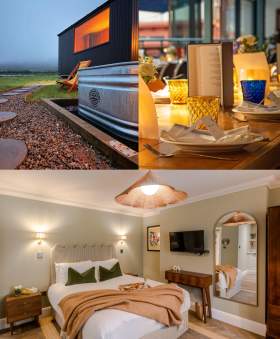Blaise Castle Estate is one of Bristol’s best green spaces. It’s loved for its 650 acres of parkland, enchanting woodland areas, and an intriguing castle that sits on a hill.
Whether you’re coming for a picnic, a walk, or to explore the museum, it’s the perfect place to enjoy, especially this coming autumn.
The estate gets its name from Saint Blaise, who was a physician and Bishop of Sebaste, which was a city located in what is now modern-day Turkey.
Blaise Castle Estate has lots of early history associated with it. This includes remains of an Iron Age hillfort, the same hill that Blaise Castle stands on today.
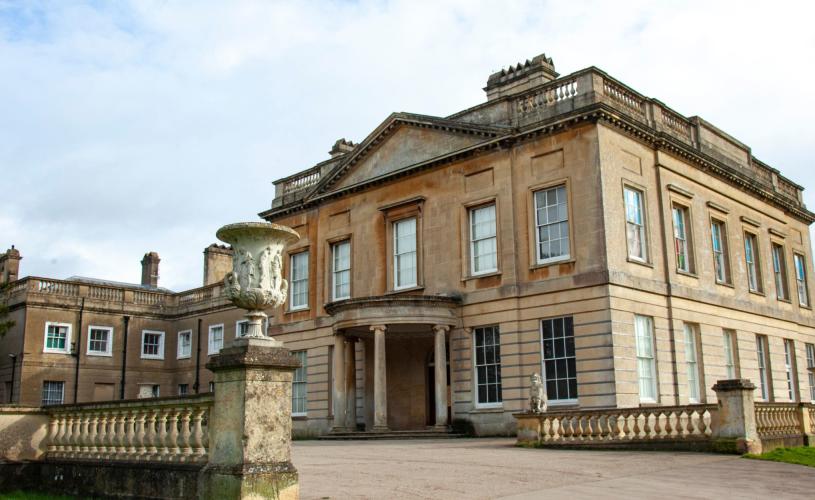
Image - The Blaise Castle House © Bristol City Council
The Blaise Castle House
In the late 1600s, there was a large mansion at Blaise Estate with baroque-style gardens. This was originally the main house of the estate and was demolished in the 19th century.
There was also a small manor house, which was where the dairy garden is now located. This was demolished shortly after the current estate you see today was built. The house you see today was built in the late 18th century by surveyor, architect, and mason William Paty for the owner at the time, John Scandrett Harford.
William Paty created a two-storey, neoclassical-style house, which was completed in 1798. Harford’s son inherited the estate after his father’s death and made some changes, including employing Charles Cockerell to add a picture room. This was added in 1832-33 and held Harford’s collection of over 30 paintings.
The house was sold to Bristol City Council in 1926 and is now the Blaise Museum, operated by Bristol Museums. Entry is free and the opening times are Thursday to Sunday, 11am to 4pm. In the museum, you can explore the different exhibits in the house and learn more about the history of Blaise Castle Estate and the surrounding area. Read more about it on the Bristol Museums website.
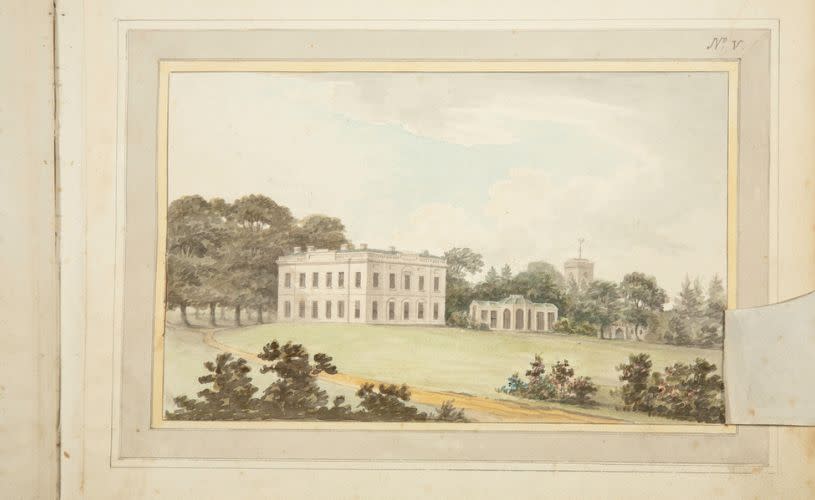
Image - Blaise Castle House, watercolour in Humphry Repton’s Red Book for Blaise, 1795. ©Bristol Culture
Orangery
Situated next to the Blaise Castle House, the orangery was built in 1806 by John Nash, who worked with landscape architect George Repton. The orangery once held exotic plants though sadly there are no plants in it currently.
The dairy
This charming building that sits close to the house was built in the cottage orné style in the early 19th century. It was also designed by John Nash, and it provided butter, milk and cheese for the house, other buildings on the estate, and sometimes the surrounding village.
Blaise Hamlet
Blaise Hamlet is a unique group of cottages, built for the employees of John Scandrett Harford. They were designed by John Nash and built by George Repton. A sundial and a pump were later added to the green that the cottages surround, in 1815, by John Scandrett Harford’s son.
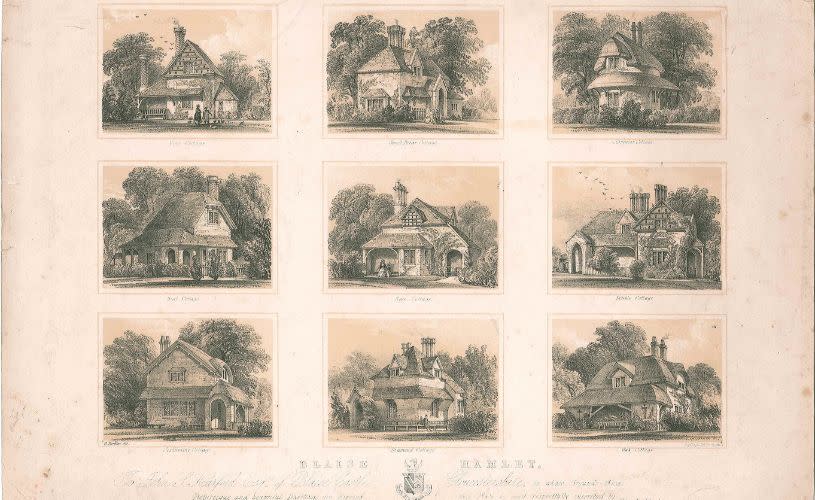
Image - Cottages of Blaise Hamlet, c. 1837. ©Bristol Culture
These nine fairytale-like cottages have been owned by the National Trust since 1943. You won’t be able to go into the cottages as they have been modernised and are lived in, but you can go and view their exteriors. Why not go and have a look at them and pick out your favourite one?
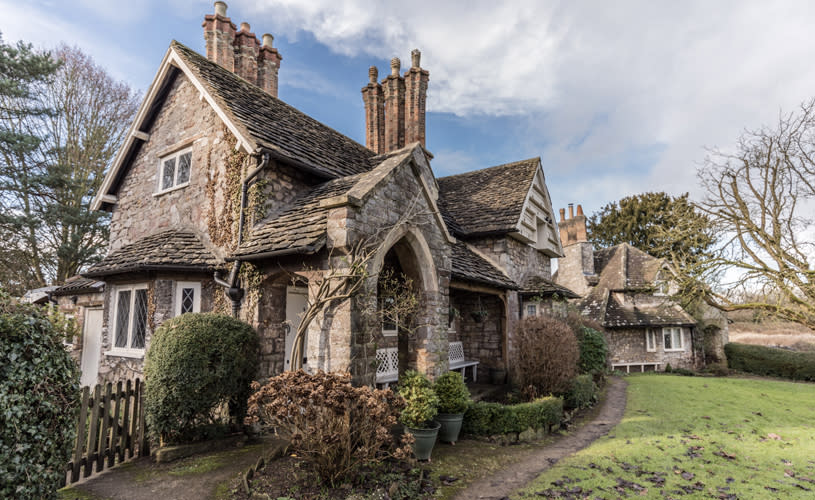
Image - Cottages in Blaise Hamlet. Credit: Oliver Jordan
The castle and its story
You may look at the intriguing Blaise Castle and think it was an ancient structure belonging to centuries past. However, it was actually built in 1766 by Robert Mylne for the estate owner Thomas Farr.
It is a gothic-style sham castle, as Farr did not need the actual defensive nature of the castle. It was built to be fashionable, and Farr used it as a summer house to entertain guests with banquets. The interior of the castle had a dining room, kitchen and medieval stained-glass windows.
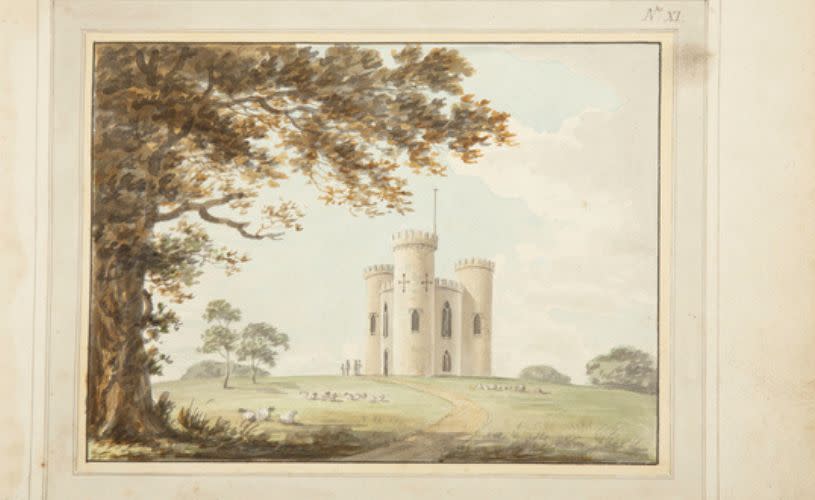
Image - Blaise Castle, watercolour in Humphry Repton’s Red Book for Blaise, 1795. ©Bristol Culture
Thomas Farr’s wealth came from investments in the transatlantic traffic in enslaved Africans. As Blaise Castle is on a hill, it allowed Thomas to look out at his ships on the River Avon and Severn.
The castle eventually became badly neglected due to a fire in the 1950s, which meant the interior was destroyed. In the 1980s, local people formed a community protest group to save the castle from being demolished. The castle is now open at certain times of the year by the Friends of Blaise group. Check out their website to discover the castle opening times.
The castle is also mentioned in Northanger Abbey, one of Jane Austen’s novels, described as ‘the finest place in England- worth going fifty miles at any time to see'.
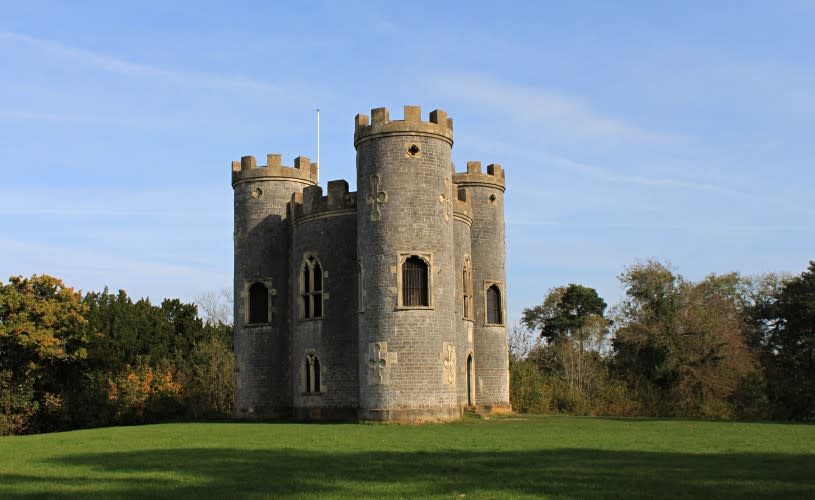
Image - Blaise Castle
The grounds at Blaise Castle Estate
The grounds at Blaise Castle Estate are extensive and offer many areas to explore. They were redesigned by popular landscape architect Humphrey Repton in the late 18th century.
Repton designed the main entrance to the estate to be through the Castle Lodge and the Gateway. The Castle Lodge and gateway were built in the late 18th century, and once carriages entered the estate this way, they would have then driven through the woods in a scenic route designed by Repton that would end with a reveal of the Blaise Castle House.
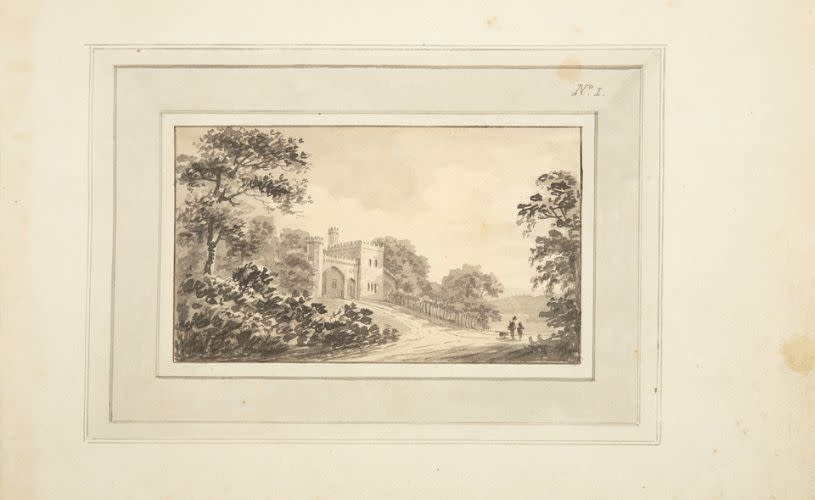
Image - Castellated Lodge at the top of Henbury Hill (the entrance to the Main Carriage drive), watercolour in Humphry Repton’s Red Book for Blaise, 1795. ©Bristol Culture
Another exciting feature of the grounds is the Woodman’s cottage, which would have been seen during the drive up to the house. It was built in 1798 and is T-shaped. This charming cottage was in the plans made by Humphrey Repton and mentioned in his red book he made for Blaise Castle Estate. This was a portfolio of the work he planned to do at the estate, filled with paintings and explanations to show to his client, John Scandrett Harford.
While you are walking through the grounds, you may come across the Giant’s footprint. Surrounded by legend, this is a unique footprint-shaped feature said to be from the mythical giant Goram. The tale suggests he lost a contest to win the giantess Avona, and this caused him to stamp his foot in anger, creating a footprint shape in a large piece of rock.
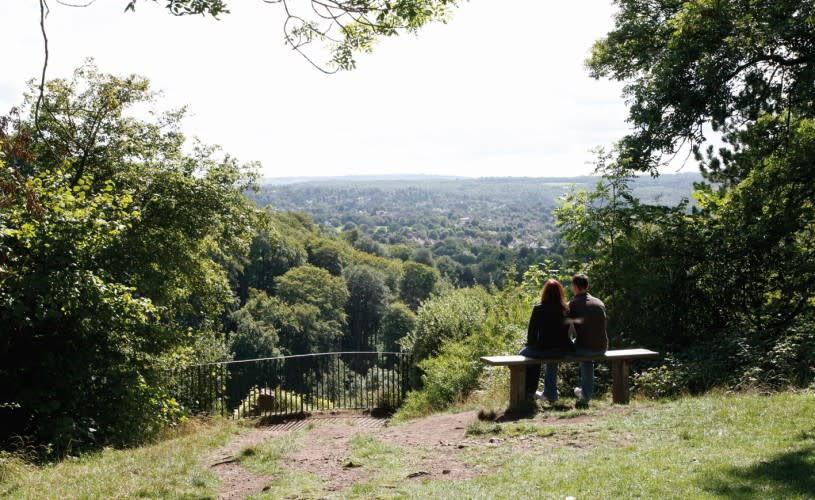
Image - Lovers Leap viewpoint at Blaise Castle Estate
Be sure to check out Bristol City Council’s website for the five different walks they provide. Their leaflets include instructions for the walks as well as interesting facts about Blaise Castle Estate!
Enjoy your adventures at Blaise Castle Estate! Be sure to tag us and include #VisitBristol in any photos you take to possibly be featured on our socials!
Read more:
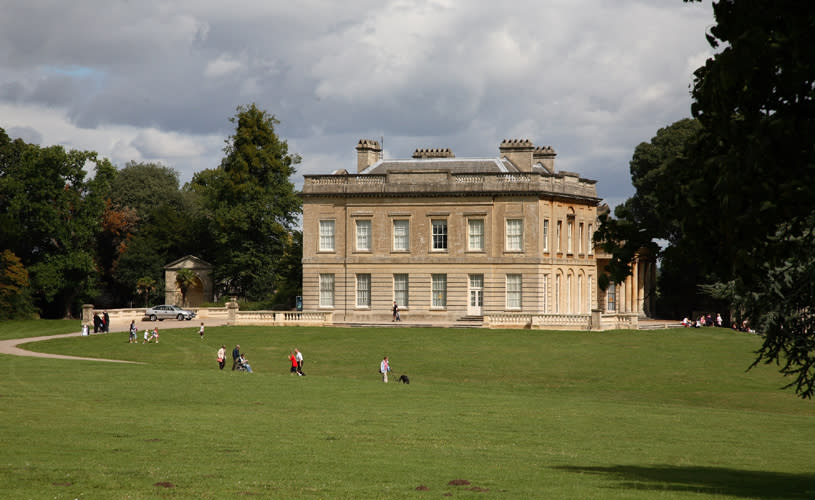
Image - Blaise Castle Estate today
